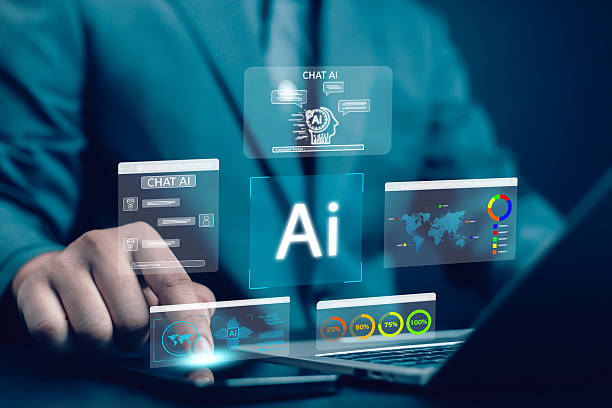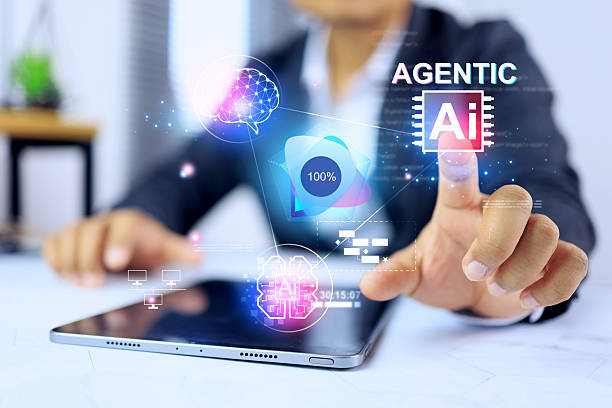What is an Artificial Intelligence Robot? Basic Definitions and Concepts
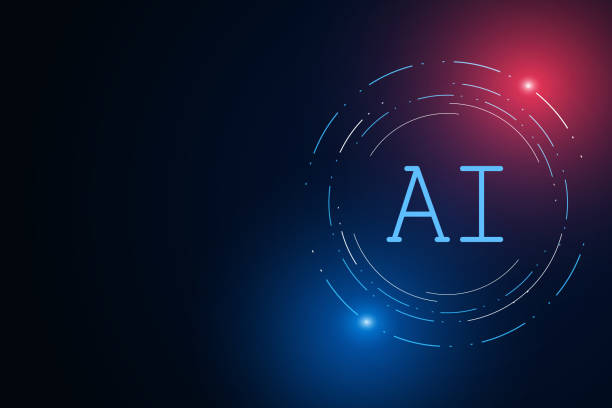
What is an Artificial Intelligence Robot?
In today’s modern world, the term #artificial_intelligence_robot is increasingly heard.
But what exactly is an artificial intelligence robot? Simply put, an artificial intelligence robot is a computer program or physical machine that, using artificial intelligence algorithms (AI), is capable of performing tasks that typically require human intelligence.
These tasks can include learning, reasoning, problem-solving, pattern recognition, and natural language processing.
In fact, an artificial intelligence robot tries to imitate human behavior and thinking, or automatically perform tasks that previously could only be done by humans.
Examples of applications of artificial intelligence robots include chatbots, virtual assistants, self-driving cars, facial recognition systems, and many others.
In general, an artificial intelligence robot operates based on input data and, using complex algorithms, identifies patterns and relationships in this data.
Then, using this knowledge, it will be able to make decisions and perform various tasks.
Therefore, the quality and quantity of input data play a very important role in the performance and accuracy of an artificial intelligence robot.
Artificial Intelligence allows robots to continuously learn from their experiences and improve their performance.
Still don’t have a company website and are missing out on online opportunities? With professional corporate website design by Rasaweb,
✅ Double the credibility of your business
✅ Attract new customers
⚡ Free consultation for your company website!
Types of Artificial Intelligence Robots Based on Application
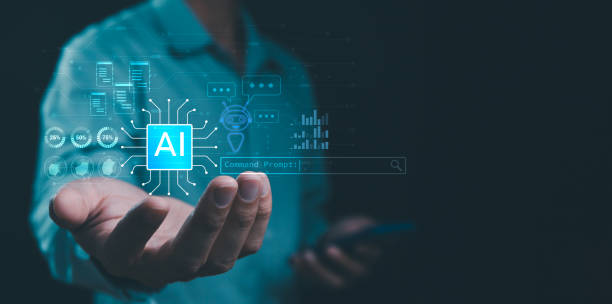
Types of Artificial Intelligence Robots
Artificial intelligence robots are divided into different categories based on their application and the type of tasks they perform.
Some of the most common types of artificial intelligence robots include:
- Chatbots These robots are designed to interact with users through text or voice and can answer questions, provide information, or help perform simple tasks.
Chatbots are commonly used in customer service, marketing, and technical support. - Virtual Assistants Virtual assistants like Siri and Alexa can perform various tasks based on user voice or text commands, including setting reminders, playing music, controlling smart home devices, and searching the internet.
- Industrial Robots These robots are used in various industries to perform repetitive, dangerous, or high-precision tasks.
Industrial robots can be used in production lines, assembly, packaging, and transportation of materials. - Self-Driving Cars Self-driving cars use artificial intelligence robots to navigate and drive without human intervention.
These cars use sensors, cameras, and radar to understand their surroundings and make the necessary decisions for safe driving. - Medical Robots Medical robots are used in various medical fields such as surgery, rehabilitation, and patient care.
These robots can assist surgeons in performing complex operations, assist patients in performing rehabilitation exercises, or assist nurses in caring for elderly patients.
Each of these types of artificial intelligence robots has its own specific features and capabilities and is used in various fields.
With the advancement of technology, it is expected that we will see an increasing expansion of the applications of artificial intelligence robots in everyday life.
For a deeper understanding of how robots work, studying scientific sources can be helpful.
How Artificial Intelligence Robots Work: Algorithms and Machine Learning
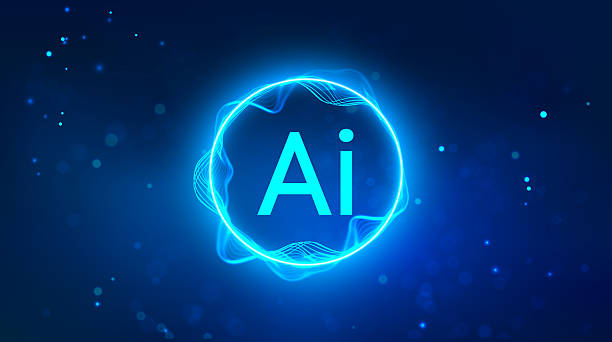
How Artificial Intelligence Robots Work
The operation of artificial intelligence robots is essentially based on machine learning algorithms and input data.
Machine learning algorithms allow robots to learn from data and improve their performance over time.
In other words, the robot analyzes input data, identifies patterns and relationships in them, and then uses this knowledge to make decisions and perform various tasks.
There are different types of machine learning algorithms, each suitable for specific applications.
Some of the most common algorithms include Supervised Learning, Unsupervised Learning, and Reinforcement Learning.
In supervised learning, the robot is trained using labeled data, while in unsupervised learning, the robot must automatically extract patterns from unlabeled data.
In reinforcement learning, the robot learns how to act in a specific environment by trial and error and receiving rewards and punishments.
In addition to machine learning algorithms, input data also plays a very important role in the performance of artificial intelligence robots.
The more accurate, complete, and diverse the input data, the better the robot can identify patterns and make better decisions.
Therefore, collecting, processing, and cleaning data is one of the critical steps in the development and training of artificial intelligence robots.
| Machine Learning Algorithm | Description | Applications |
|---|---|---|
| Supervised Learning | Training using labeled data | Image Recognition, Prediction |
| Unsupervised Learning | Extracting patterns from unlabeled data | Clustering, Dimensionality Reduction |
| Reinforcement Learning | Learning through trial and error | Games, Robotics |
Applications of Artificial Intelligence Robots in Various Industries
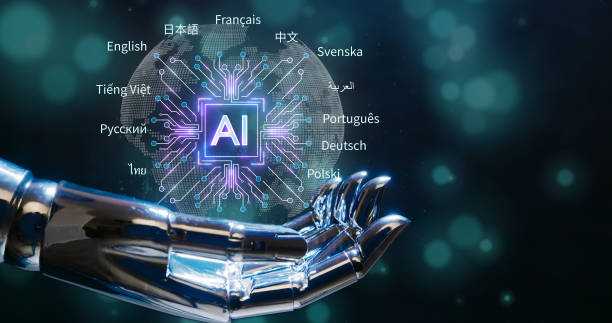
Applications of Artificial Intelligence Robots in Various Industries
Artificial intelligence robots have many applications in various industries and are significantly transforming them.
In the manufacturing industry, artificial intelligence robots can be used for automating production lines, quality control, and predicting equipment failures.
In the service industry, artificial intelligence robots can be used for providing customer service, answering questions, and processing requests.
In the healthcare industry, artificial intelligence robots can be used for diagnosing diseases, performing precise surgeries, and caring for patients.
In addition, artificial intelligence robots have important applications in other areas such as education, transportation, and security.
In education, artificial intelligence robots can be used for providing personalized training, assessing student knowledge, and providing feedback to them.
In transportation, artificial intelligence robots can be used for controlling traffic, optimizing routing, and driving autonomously.
In security, artificial intelligence robots can be used for detecting security threats, monitoring locations, and responding to incidents.
IBM is one of the leading companies in the development and application of artificial intelligence.
In general, artificial intelligence robots have great potential for improving efficiency, reducing costs, and increasing the quality of human life.
However, the use of artificial intelligence robots also comes with challenges such as ethical concerns, job losses, and the potential for misuse, which should be given sufficient attention.
Are you tired of your company’s website not being seen as it should be and losing potential customers? Solve this problem forever with professional and effective website design by Rasaweb!
✅ Increase brand credibility and gain customer trust
✅ Attract targeted sales leads
⚡ Contact us now for a free consultation!
Advantages and Disadvantages of Using Artificial Intelligence Robots

Advantages and Disadvantages of Using Artificial Intelligence Robots
The use of artificial intelligence robots has several advantages and disadvantages that should be considered before deploying them.
Some of the advantages of using artificial intelligence robots include:
- Increased Efficiency Artificial intelligence robots can perform tasks faster and more accurately than humans.
- Reduced Costs Artificial intelligence robots can reduce labor, training, and maintenance costs.
- Improved Quality Artificial intelligence robots can improve the quality of products and services by reducing errors and increasing accuracy.
- 24/7 Availability Artificial intelligence robots can work 24 hours a day, 7 days a week without interruption.
- Performing Dangerous Tasks Artificial intelligence robots can perform dangerous and harmful tasks without endangering human lives.
Some of the disadvantages of using artificial intelligence robots include:
- High Initial Cost Purchasing and implementing artificial intelligence robots can be expensive.
- Ethical Concerns The use of artificial intelligence robots can raise ethical concerns about privacy, discrimination, and accountability.
- Job Losses Automation of tasks by artificial intelligence robots can lead to the loss of some jobs.
- Need for Expertise Maintaining and repairing artificial intelligence robots requires expertise and technical knowledge.
- Potential for Misuse Artificial intelligence robots can be used for malicious purposes such as hacking, espionage, and creating disruptions.
Therefore, before using artificial intelligence robots, you should carefully consider its advantages and disadvantages and make informed decisions.
Challenges in the Development and Use of Artificial Intelligence Robots
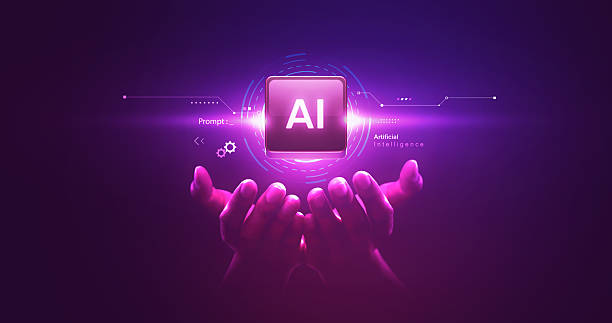
Challenges in the Development and Use of Artificial Intelligence Robots
The development and use of artificial intelligence robots face many challenges that must be overcome.
One of the most important challenges is the lack of high-quality training data.
Artificial intelligence robots need large and diverse data to learn and improve their performance, but collecting and labeling this data can be time-consuming and costly.
Another challenge is the limitations of machine learning algorithms.
Current algorithms are not yet able to fully mimic human intelligence and face limitations in some areas such as reasoning, creativity, and natural language understanding.
In addition, machine learning algorithms can make discriminatory decisions due to bias in the training data.
Also, ethical and legal issues related to the use of artificial intelligence robots pose significant challenges.
Who is responsible for the decisions made by an artificial intelligence robot? How can individuals’ privacy be protected from surveillance by artificial intelligence robots? How can the misuse of artificial intelligence robots for malicious purposes be prevented? These are questions that must be answered in order to use artificial intelligence robots safely and responsibly.
For more information on artificial intelligence standards, you can visit the NIST website.
The Future of Artificial Intelligence Robots: Prospects and Possibilities
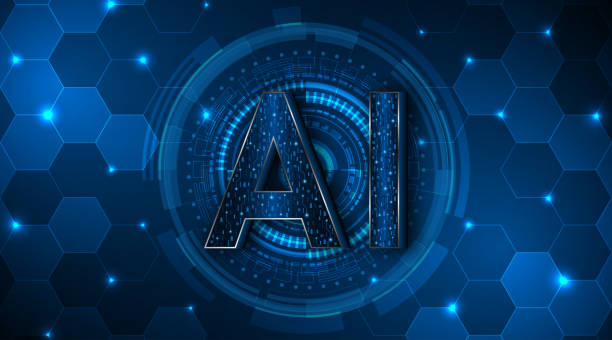
The Future of Artificial Intelligence Robots: Prospects and Possibilities
The future of artificial intelligence robots is very bright and full of possibilities.
With the advancement of technology, it is expected that artificial intelligence robots will increasingly penetrate our daily lives and play a more important role in various industries.
In the future, we may see artificial intelligence robots that are capable of performing more complex tasks such as diagnosing diseases, designing products, and managing businesses.
It is also expected that artificial intelligence robots will interact more with humans and be used as personal assistants, advisors, and companions.
In the future, we may see artificial intelligence robots that are capable of understanding human emotions, responding to their needs, and providing emotional support to them.
| Field | Prospects of Artificial Intelligence Robots |
|---|---|
| Medicine | More accurate diagnosis of diseases, advanced robotic surgeries |
| Education | Personalized training, automated assessment |
| Transportation | Self-driving cars, intelligent traffic management |
| Customer Service | Fast and accurate response, 24-hour support |
However, it should also be noted that the development and use of artificial intelligence robots come with challenges that should be given sufficient attention.
To fully benefit from the potential of artificial intelligence robots, ethical, legal, and social issues related to them must be addressed and solutions must be provided.
Ethical Considerations in the Design and Use of Artificial Intelligence Robots
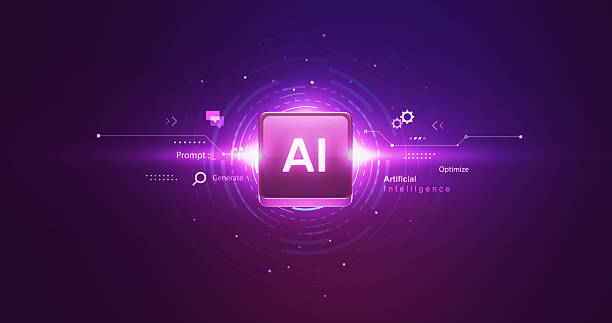
Ethical Considerations in the Design and Use of Artificial Intelligence Robots
In the design and use of artificial intelligence robots, ethical considerations are of particular importance.
It must be ensured that artificial intelligence robots are designed in a way that respects human rights and values and avoids harming humans.
Also, mechanisms must be created for the accountability of artificial intelligence robots for their actions.
One of the most important ethical considerations is the issue of discrimination.
Artificial intelligence robots can make discriminatory decisions due to bias in the training data.
Therefore, efforts must be made to collect diverse and fair training data, and machine learning algorithms must be designed in a way that prevents discrimination.
The issue of privacy is another important ethical consideration.
Artificial intelligence robots can collect and process a large amount of personal information.
Therefore, laws and regulations must be put in place to protect individuals’ privacy from surveillance by artificial intelligence robots.
The Center for AI Ethics at Harvard University conducts comprehensive research in this area.
In addition, the issue of accountability must also be addressed.
Who is responsible for the decisions made by an artificial intelligence robot? If an artificial intelligence robot causes damage, who should be held accountable? These are questions that must be answered in order to use artificial intelligence robots responsibly.
Are you worried that your company’s old website is driving away new customers? Rasaweb solves this problem by designing a modern and efficient corporate website.
✅ Increases your brand credibility.
✅ Helps to attract targeted customers.
⚡ Contact Rasaweb for a free consultation!
Key Points for Successful Implementation of Artificial Intelligence Robots
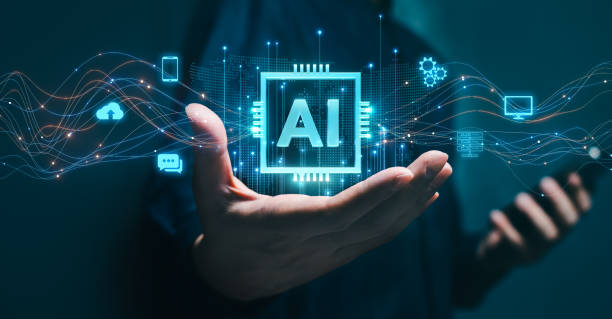
Key Points for Successful Implementation of Artificial Intelligence Robots
Successful implementation of artificial intelligence robots requires careful planning, the right choice of technology, and proper project management.
Here are some key points for the successful implementation of artificial intelligence robots:
- Define the Goal Before starting any project, the goal of implementing an artificial intelligence robot should be clearly defined.
What problem do you want to solve? What goals do you want to achieve? - Choose the Right Technology There are different technologies for implementing artificial intelligence robots.
You should choose the right technology based on the needs and limitations of the project. - Collect High-Quality Data Artificial intelligence robots need large and high-quality data to learn and improve their performance.
It must be ensured that the training data is accurate, complete, and diverse. - Training and Evaluation Artificial intelligence robots should be continuously trained and their performance should be evaluated.
Mechanisms should be created to provide feedback to the robot and improve its performance. - Pay Attention to Ethical Issues In the design and use of artificial intelligence robots, ethical issues should be considered.
It must be ensured that robots respect human rights and values and avoid harming humans. - Risk Management Implementing artificial intelligence robots involves risks.
These risks should be identified and solutions should be provided to manage them.
By following these key points, you can increase the likelihood of success of your artificial intelligence robot implementation projects.
Useful Resources and Tools for Artificial Intelligence Robot Development
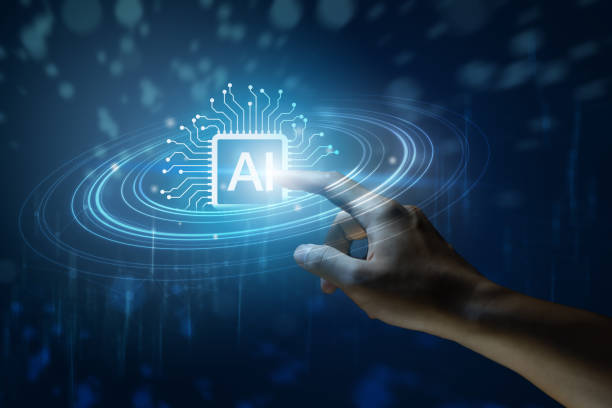
Useful Resources and Tools for Artificial Intelligence Robot Development
Developing artificial intelligence robots requires access to appropriate resources and tools.
Fortunately, today there are many resources and tools available to help developers of artificial intelligence robots.
Here are some of these resources and tools:
- Machine Learning Libraries Libraries such as TensorFlow, PyTorch, and scikit-learn provide powerful tools for implementing machine learning algorithms.
- Cloud AI Platforms Platforms such as Google Cloud AI, Amazon AI, and Microsoft Azure AI offer a variety of tools for developing, training, and deploying artificial intelligence robots.
- Public Datasets Public datasets such as ImageNet, MNIST, and UCI Machine Learning Repository provide valuable data for training artificial intelligence robots.
- Online Training Courses Online training courses such as Coursera, edX, and Udacity provide good opportunities to learn the skills needed to develop artificial intelligence robots.
- Online Forums Online forums like Stack Overflow and Reddit are good places to ask questions, share experiences, and learn from other artificial intelligence robot developers.
By using these resources and tools, you can quickly and easily start developing artificial intelligence robots.
For more information on Google AI Tools, you can visit the Google AI website.
Frequently Asked Questions
| Question | Answer |
|---|---|
| What is an artificial intelligence robot? | A robot that uses artificial intelligence capabilities to understand the environment, reason, learn, and make decisions to perform complex tasks independently. |
| What is the main difference between a regular robot and an artificial intelligence robot? | Artificial intelligence robots can learn and adapt to their environment, while regular robots usually operate based on fixed and pre-determined plans. |
| In what areas are artificial intelligence robots used? | In areas such as industry (production lines), medicine (robotic surgeries), services (customer support, smart vacuum cleaners), exploration (space and underwater), and entertainment. |
| How do artificial intelligence robots learn? | They acquire new skills through machine learning algorithms (Machine Learning) and deep learning (Deep Learning), by analyzing large amounts of data and identifying patterns. |
| Can artificial intelligence robots have emotions? | Currently, no. They can identify or simulate emotions, but do not have the actual experience of emotions like humans. |
| What are the most important advantages of using artificial intelligence robots? | Increased productivity, reduced human error, performing dangerous or repetitive tasks, and providing innovative and efficient services. |
| What challenges exist in the development of artificial intelligence robots? | The need for large and high-quality data, algorithm complexity, ethical issues, cyber security, and high research and development costs. |
| Are artificial intelligence robots dangerous to humans? | By following safe design principles and ethical regulations, no. Concerns are more related to social and economic impacts such as changes in the labor market. |
| What is an example of an artificial intelligence robot in everyday life? | Smart vacuum robots (such as Roomba) that automatically map and clean the house, or smart voice assistants (such as Siri and Alexa). |
| How is the future of artificial intelligence robots predicted? | They are expected to become smarter, more autonomous, and capable of more complex interactions with humans, playing a more prominent role in industry, medicine, transportation, and everyday life. |
and other services of Rasa Web advertising agency in the field of advertising
Smart Marketplace: An innovative service to increase online growth through the use of real data.
Smart Data Analysis: A combination of creativity and technology to increase sales by using real data.
Smart Website Development: A professional solution to improve SEO ranking with a focus on Google Ads management.
Smart Advertising Campaign: A creative platform to improve campaign management using real data.
Smart SEO: An innovative service to increase user engagement through attractive user interface design.
And more than hundreds of other services in the field of internet advertising, advertising consulting and organizational solutions
Internet Advertising | Advertising Strategy | Advertorial
Sources
Introduction to Analytical Artificial Intelligence Robot
,Types of Intelligent Robots
,What is Artificial Intelligence and How Does it Work?
,What is an Intelligent Robot?
? For the growth and brilliance of your business in the online space, Rasaweb Digital Marketing Agency is with you by providing the best services. To improve your digital presence and learn more about our solutions, including our professional services in the field of personal website design, please visit.
📍 Tehran, Mirdamad Street, next to the Central Bank, South Kazerun Alley, Ramin Alley No. 6

